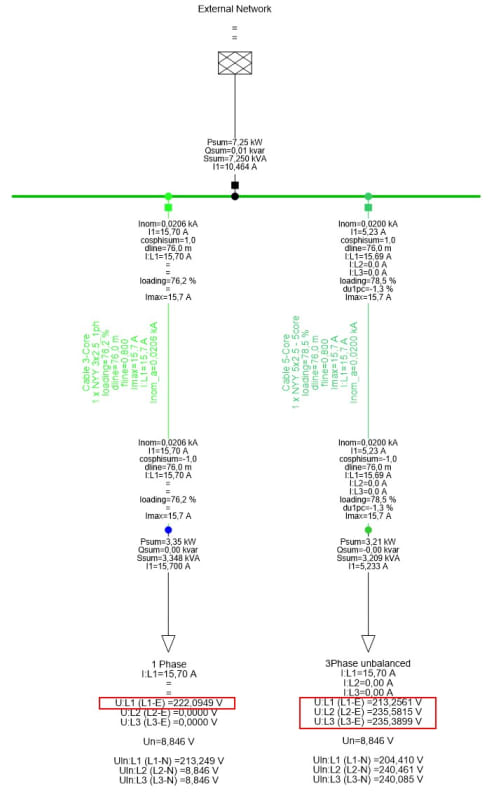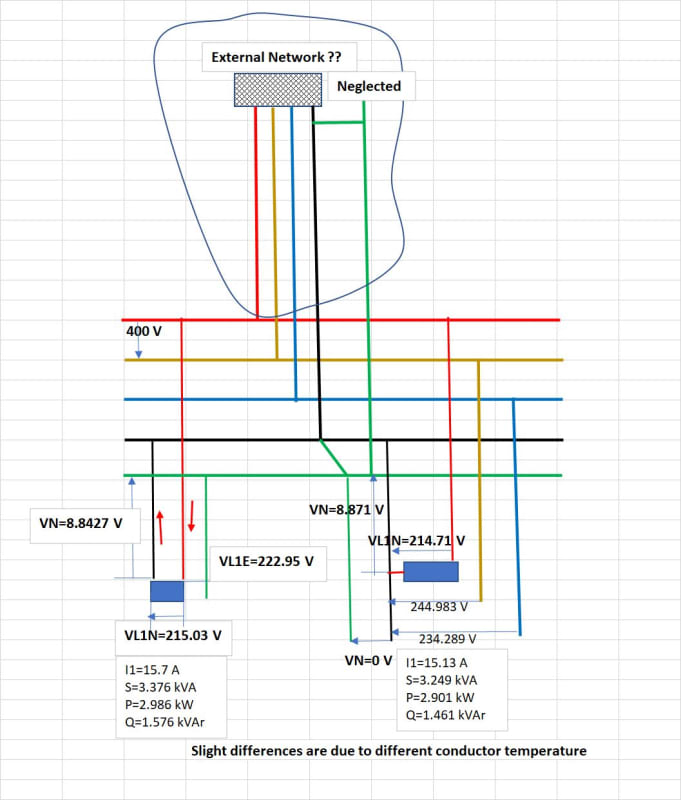Hi all,
If we have a 3phase unbalance load (400V L-L, 230V L-N nominal voltages), which all loads are on 1phase and the other phases are unloaded, is it expected that L-E voltage in unloaded phases changes? (anything rather than 230V?)
I know that by unbalance loading, neutral point displaces and neutral voltage is something rather than 0. Therefore I expect L-N voltage changes on all phases. But my question is about line to earth voltage.
I ask this question because software simulation of such unbalanced load by DIgSILENT power factory shows such strange results!
If we have a 3phase unbalance load (400V L-L, 230V L-N nominal voltages), which all loads are on 1phase and the other phases are unloaded, is it expected that L-E voltage in unloaded phases changes? (anything rather than 230V?)
I know that by unbalance loading, neutral point displaces and neutral voltage is something rather than 0. Therefore I expect L-N voltage changes on all phases. But my question is about line to earth voltage.
I ask this question because software simulation of such unbalanced load by DIgSILENT power factory shows such strange results!


